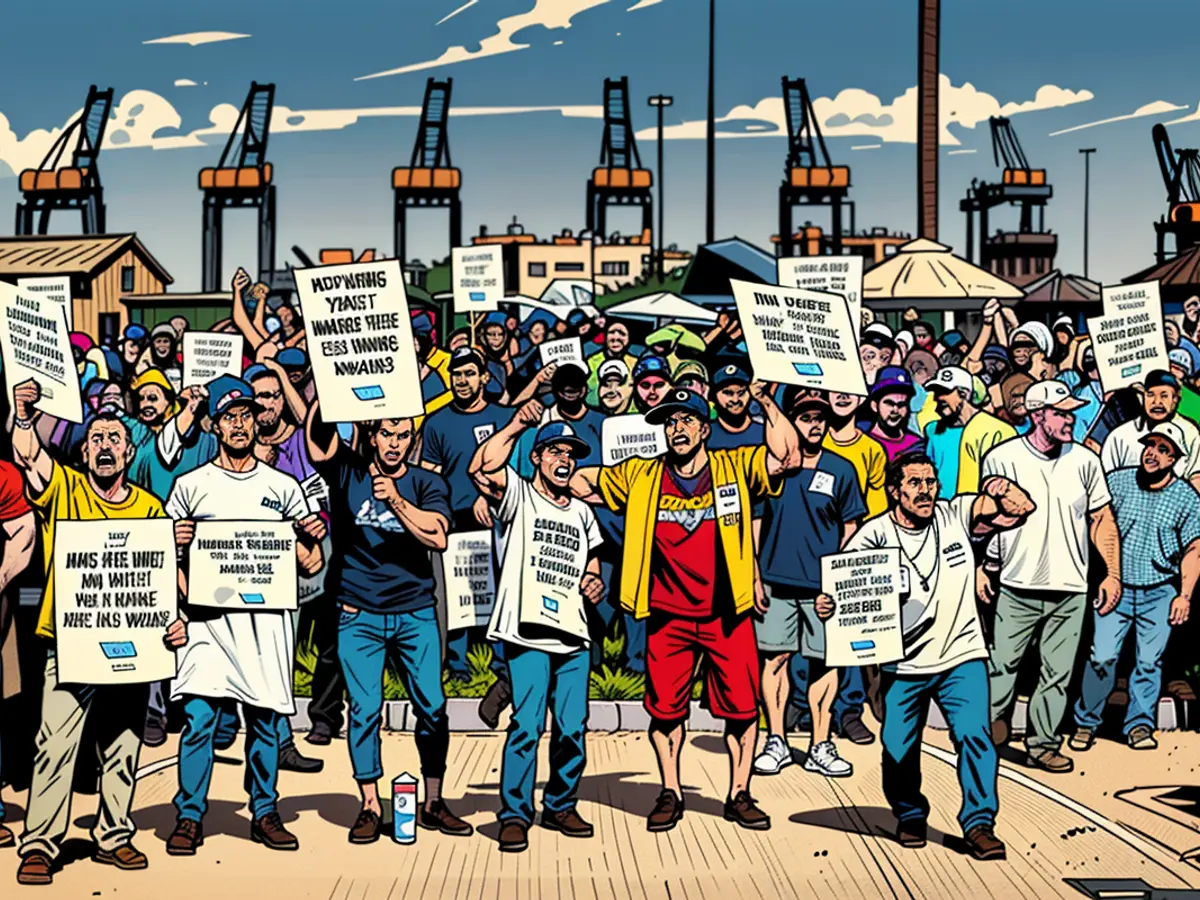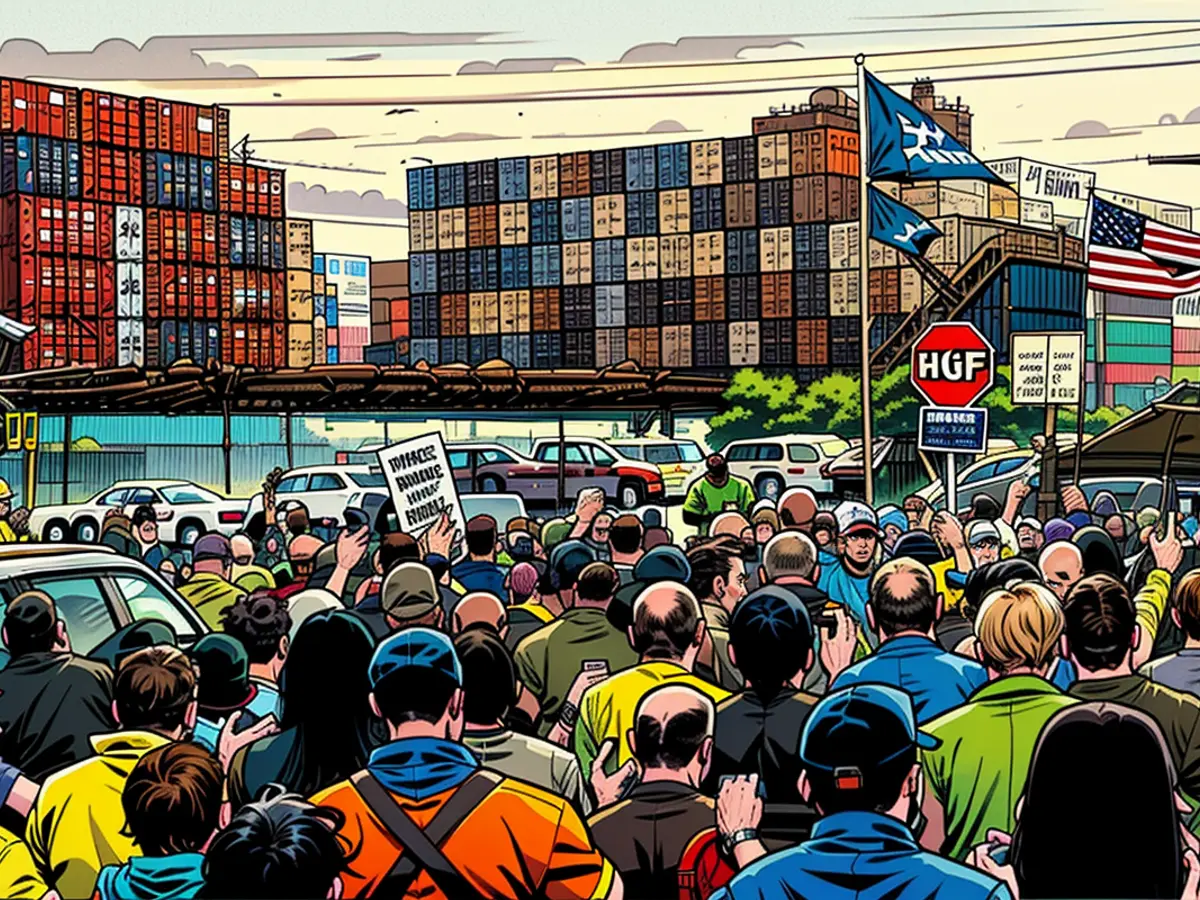Manual laborers in dockyards are engaged in a struggle against mechanization. It might be wise for the general population to pay attention.
This is a fight you can anticipate becoming more common as sophisticated automation and AI infiltrate virtually every workplace.
The Lowdown: The East Coast port strike is generating plenty of buzz for its potential impact on the economy – exactly the point. Longshore work is physically demanding, and the people at ports play a crucial role in getting all the goods we want to buy onto store shelves. Without dockworkers, no bananas (or whatever else) means no profits for the companies that produce and ship them.
The strike that started on Tuesday is centered around two primary issues: wages and automation. Around the ports, you can see workers displaying signs that read “robots don’t pay taxes” and “automation harms families.”
They're opposing a trend that port operators mainly want to accelerate: more cranes and driverless trucks carrying goods from container ships, with fewer humans needing compensation.
However, the economic benefits of automation aren't straightforward. While studies show that automation offers obvious advantages, such as lower operational costs and fewer human-related errors, port automation alone doesn't usually boost productivity, according to a 2018 McKinsey report.
Automated ports "are generally less productive than their conventional counterparts," and their significant capital investments rarely meet the industry standard in terms of returns, as per industry leaders surveyed by McKinsey. Nevertheless, automation is an undeniable trend, and US shipping executives appear to be covetously eyeing the modern ports in China, Singapore, and Europe.
“The rest of the world is looking down on us because we’re fighting automation,” Dennis Daggett, the executive vice president of the International Longshoremen’s Association, stated outside the Port of New York and New Jersey on Tuesday morning. “Remember that this industry, this union has always adapted to innovation. But we will never adapt to robots taking our jobs.”
The dockworkers' concerns are valid.
Automation won’t entirely eliminate the need for human labor, but it will drastically reduce the number of personnel required for payroll, just as it has in many fields, such as auto manufacturing and mining. One report from the Economic Roundtable revealed that automation eliminated 572 full-time roles at the ports of Long Beach and Los Angeles in 2020 and 2021.
The longshoremen’s union is demanding a $5-an-hour increase in pay for each of the six years within the next contract and "watertight" language to prohibit the ports from introducing automation or semi-automation.
The displacement of automation is a common theme in the history of blue-collar work, and it became a key point of contention in last year's Hollywood strikes as actors and writers strove to shield their creative work from being replicated by artificial intelligence.
However, automation anxiety has swiftly spread to white-collar work, where managers are adopting AI with the hope of replacing human labor or boosting productivity.
Over the summer, a survey of large US companies found that more than 60% plan to use AI within the next year to automate tasks previously handled by employees.
Sameera Fazili, the former deputy director of the National Economic Council in the Biden administration, stated that workers aren't saying "no" to automation altogether but are instead demanding a role in shaping how it becomes integrated into the workplace. And this anxiety is contributing to growing interest in labor organizing.
“This is happening in an environment where, it’s not like CEOs and shareholders are losing – they can continue to profit ... all of the risk is being borne by other workers and the company,” Fazili told me. “And I think it’s interesting that people are saying ‘no’ more and trying to test out collective bargaining and worker organizing as a way to have that voice.”
The Gist: The bots are coming for all of us, which is why the outcome of the port strike is particularly significant to observe. As Washington Post columnist Heather Long wrote on Tuesday, the strike is “an early battle of well-paid workers against advanced automation. There will be many more to come.”
In light of the increasing automation and AI in various workplaces, businesses might need to reevaluate their strategies to adapt to this trend. The East Coast port strike highlights the potential impact of automation on jobs, as evidenced by the Economic Roundtable report, which revealed that automation eliminated 572 full-time roles at the ports of Long Beach and Los Angeles in 2020 and 2021.









